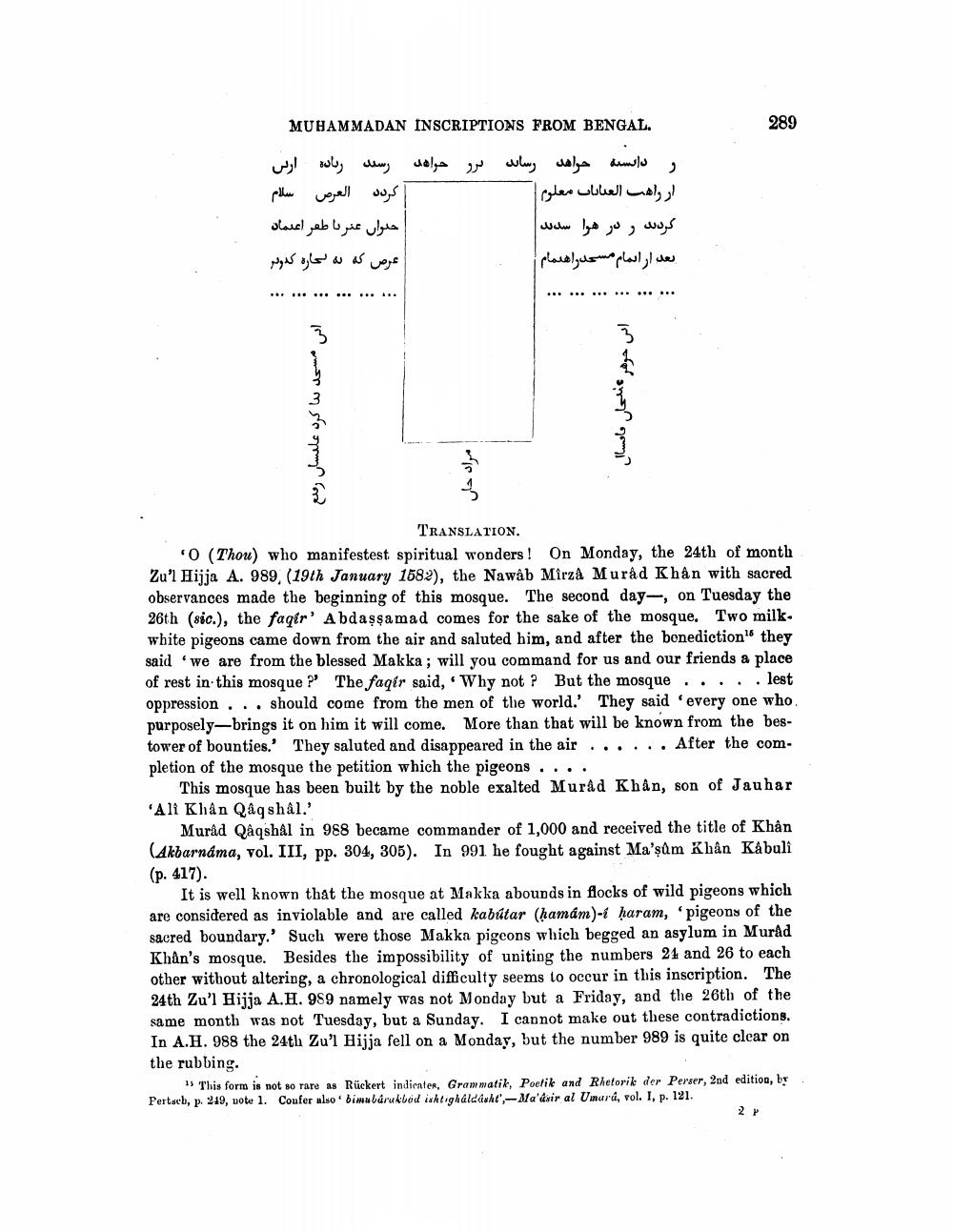________________
MUHAMMADAN INSCRIPTIONS FROM BENGAL.
289
خواهد
برر
اریس رماده رسید
سلام العرص کردن حیراں عمر با طعر اعتمان
که به نحاره کدو در عرص
رساند
خواهد دانسته ر ار راهب العدایاب معلوم کردند و در هرا سدد بعد ار امام مسعدراهدمام
..................
... ... ... ... ... ...
اس
حرهر
و مسجد بنا کرد علیساں رفع
حال نامسال
مراك
TRANSLATION 'O (Thou) who manifestest spiritual wonders! On Monday, the 24th of month Zu'l Hijja A. 989, (19th January 1582), the Nawab Mirza Murad Khan with sacred observances made the beginning of this mosque. The second day-, on Tuesday the 26th (sic.), the faqir' Abdaşşamad comes for the sake of the mosque. Two milk. white pigeons came down from the air and saluted him, and after the benediction" they said 'we are from the blessed Makka; will you command for us and our friends a place of rest in this mosque ?' The faqir said, 'Why not? But the mosque ..... lest oppression . . . should come from the men of the world. They said every one who purposely-brings it on him it will come. More than that will be known from the bestower of bounties.' They saluted and disappeared in the air ..... After the com. pletion of the mosque the petition which the pigeons ....
This mosque has been built by the noble exalted Murad Khân, son of Jauhar 'Ali Khân Qaqshål.'
Murad Qaqshal in 988 became commander of 1,000 and received the title of Khân (Akbarnáma, vol. III, pp. 304, 305). In 991 he fought against Ma'şüm Khân Kabuli (p. 417).
It is well known that the mosque at Makka abounds in flocks of wild pigeons which are considered as inviolable and are called kabútar (hamam)-i haram, pigeons of the sacred boundary.' Such were those Makka pigeons which begged an asylum in Murad Khan's mosque. Besides the impossibility of uniting the numbers 24 and 26 to each other without altering, a chronological difficulty seems to occur in this inscription. The 24th Zu'l Hijja A. H. 989 namely was not Monday but a Friday, and the 26th of the same month was not Tuesday, but a Sunday. I cannot make out these contradictions. In A.H. 988 the 24th Zu'l Hijja fell on a Monday, but the number 989 is quite clear on the rubbing.
" This form is not so rare as Rückert indienter, Grammatik, Poetik and Rhetorik der Perser, 2nd edition, by Pertseb, p. 219, note 1. Coufer also bimubůrukbod ishtighaldasht',-Ma'dir al Uinard, vol. I, p. 121.




